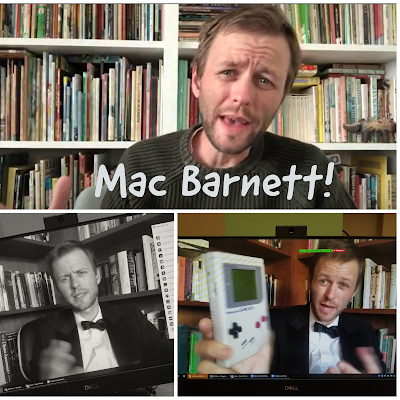By Alexandra Cornejo
Alexandra Cornejo is a high school librarian in Harlingen, TX. She is a member of the Texas Maverick Reading List Committee and hosts a booktalk podcast Allie the Librarian Booktalks. She is an enthusiast of comics and graphic novels and can often be found reading them late into the night with her booklight. Twitter @allie_cornejo
iPod + Broadcast =Podcast, this was the concept that was born in 2004 to offer the world radio on demand. Podcasts are usually audio only and meant for entertainment or news, but have since evolved to provide content on a multitude of subjects. There are actually about 750,000 podcasts or 30 million episodes available today! It's not surprising that educators have found their niche within the podcast sphere and some of my absolute favorite podcasts are Cult of Pedagogy, Overthrowing Education and Educhange. However, my love of podcasts doesn’t stem from listening to them or even hosting my own. I really knew I loved podcasts when I realized they were an essential tool for providing students choice in the classroom or library.
I've been listening to podcasts for years and I've always preferred them over YouTube or even music on the radio. Being an auditory learner, listening to thoughtful conversation has always aided in my comprehension of information. This served as an inspiration to bring this way of learning into the library; an innovative way for students to demonstrate evidence of learning or using it as a method of internalizing information. Choice boards have become popular and education technology is now essential to a quality education, so my hunt for a user-friendly way of recording a podcast was urgent. I needed an app that wouldn’t be hard for students to grasp and made the product easily shareable. Synth was an app I found on library Twitter that offered everything I needed to carry out podcasting for the classroom. Synth, at the time, allowed 4 ½ minutes to record and students could respond to their classmate’s podcast through voice comments. I immediately brought it into my library and had students begin creating their own podcasts by summarizing informational texts and having their classmates, or audience, respond with thoughtful commentary. Podcast projects grew to include reflections for expository writing, book reviews, interviews and eventually, even my Tech Team had a weekly podcast they were publishing. Podcast presentations became a fixture on my student choice boards and after I conducted podcast PD with my teachers, this presentation method was a common tool in my teachers’ digital toolbox.
The benefits I’ve seen from podcasting with students have been numerous, indeed. Podcasts are immersive, which appeals to our sociologically trained ear that is inclined to listen to a story from start to finish, which also diminishes opportunity for distraction. Students develop valuable skills in articulating their thoughts effectively with the limited time they are allowed. Also, my students are their own harshest critics, so when they listen to themselves, they notice every “Um”, “Well”, and “Like” and quickly make the necessary adjustments. One of my favorite benefits, though, has to do with Emergent Bilinguals and the fact that they’re using their listening, speaking, reading and writing skills required for language proficiency when a podcast project requires script writing, voice recording and audience participation. And while Synth is still my preferred way of producing podcasts in the library, the trend has grown and increased in availability on a number of platforms, including Flipgrid, Garageband and Anchor.
It’s a joy to witness my students become expert storytellers and savvy debaters, and I have, especially, enjoyed being able to effectively communicate with parents and teachers through an audio newsletter podcast I embed on my website. Podcasting has become such a passion of mine that I created my own podcast, Allie the Librarian Booktalks, which is available where you listen to your favorite podcasts. Conveniently, recording a podcast is fairly easy to carry out using a variety of devices. Chromebooks, laptops, iPads and smartphones are all great choices for recording. Earbuds with mic capabilities eliminate a lot of noise pollution which increases sound quality but are not necessary. I do hope you’ll give this a try in your library, as many of our students tend to be anxious creating a video response in class. Let podcasts serve as a way of easing a student out of their comfort zone to create something just as effective and entertaining. This is a trend that will not be going away anytime soon and I’m positive that it has found a permanent spot on our choice boards to amplify student voice.
















